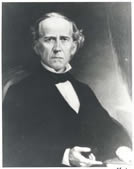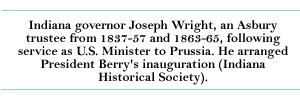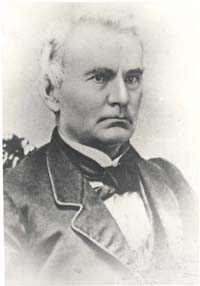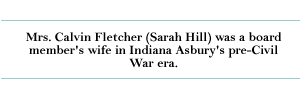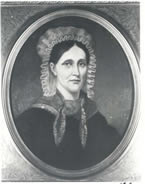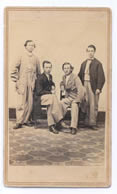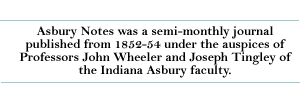
|
|
|
|
In
July 1857 the board of trustees voted a lukewarm endorsement of
the administration, but Curry resigned anyway, followed by two members
of the faculty. Too heavy handed and tactless for a college president,
he went on to successful pastorates in New York and Connecticut
and a 12-year stint as editor of the Christian Advocate in New York
City.
To replace Curry the trustees chose one of their own number, Judge
David McDonald, former head of the Indiana University Law School
and a layman, who waited a year before declining the post. Cyrus
Nutt, who had returned to the Asbury faculty for the third time
as vice president, acted as president until the arrival of the Rev.
Thomas Bowman, a Pennsylvanian
and graduate of Dickinson College whom the board elevated as president
in 1858.
The
'50s were a turbulent period in the university's history, marked
by high faculty and administrative turnover as well as a Likewise
in the '50s the students were becoming restless under a narrow and
rather arbitrary course of study, which included compulsory chapel
attendance plus three or four hours of class recitations each weekday
morning, Saturday morning exercises in composition and declamation,
and Sunday afternoon faculty lectures. It is surprising that there
were not more frequent student uprisings!
Prosperous
members of the new middle class of farmers and professionals were
constructing red-brick mansions and sending their children to college
to "get ahead." Greencastle was connected to the wider
world by the Terre Haute Railroad (later part of the Pennsylvania
system) running east and west; and to the north and south by the
Louisville, New Albany, and Chicago (The Monon) railroad. While
Indiana Asbury experienced some enrollment declines in the '50s,
it remained the largest institution of higher education in the state,
with a student body ranging between 200 and 300. Its alumni were
successful lawyers, ministers, physicians, editors, teachers, politicians,
farmers, and businessmen in Indiana and beyond. |
Depauw University e-history | E-mail comments to: archives@depauw.edu
|
People, Events & Traditions
|
